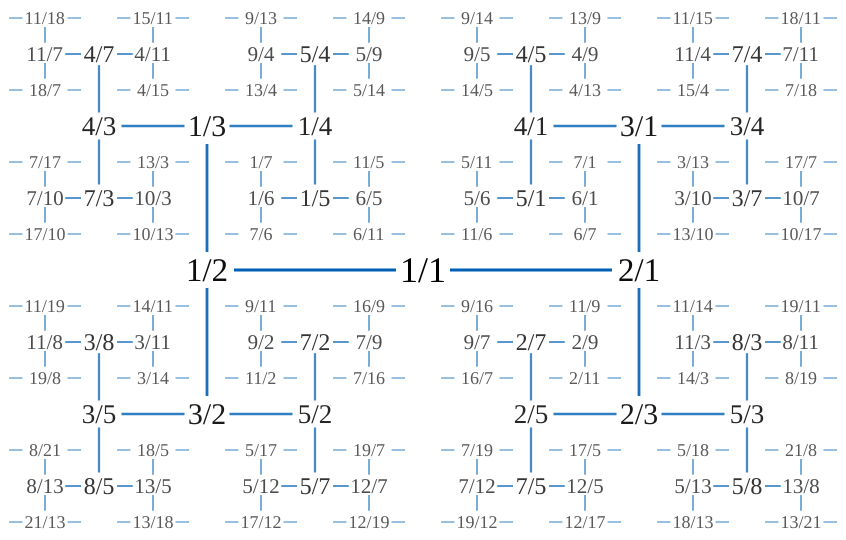To my aesthetic sensibilities, the Calkin-Wilf tree response is pretty close to optimal, but I'll add some additional glosses. (I only noticed later that Vladimir Dotsenko wrote something similar before me.)
As you can see, the Calkin-Wilf tree is an infinite binary tree; each node of the tree can be identified by a word or finite sequence of letters using the alphabet $\mathbb{2} := \{L, R\}$. There are of course lots of ways of setting up explicit bijections between the set of nodes of this tree and $\mathbb{N}$. The spiral depicted in Burak's answer suggests one possibility; roughly speaking, this is the ordinal sum $\mathbb{2}^0 + \mathbb{2}^1 + \mathbb{2}^2 + \ldots$ where shorter words always precede longer words but words of the same length are ordered according to the dictionary, where letter $L$ precedes letter $R$. Thus the empty word (of length 0) comes first, then $L, R$, then $LL, LR, RL, RR$, etc. A more or less explicit enumeration from $\mathbb{N}_+ = \{1, 2, 3, \ldots\}$ to the set of words (the free monoid $\mathbb{2}^\ast$) is just by binary representation, where each number has a leading $1$ followed by a sequence of "digits" $L$ (the digit zero) and $R$ (the digit $1$).
Meanwhile, by the Euclidean algorithm, each positive rational may be uniquely specified as a continued fraction $[a_0; a_1, \ldots, a_n]$ where $n$ is odd and $a_0$ may be $0$; the remaining $a_i$ are positive integers (N.B.: we allow for the possibility that $a_n = 1$!). More exactly, we define $R^a$ to be the operator $R^a(x) = a + x$ and $L^a$ to be the operator $L^a(x) = \frac1{a + \frac1{x}}$ (note that $L$ is a conjugate of $R$), and we identify a positive rational by a unique expression $q = R^{a_0} L^{a_1} \ldots L^{a_n - 1}(1)$. The word on the right-hand side is precisely the Calkin-Wilf representation using the alphabet $\mathbb{2} = \{L, R\}$.
There are actually a number of fascinating representations along similar continued fraction lines; I could write more, but for now you can read the nLab article. Noam Zeilberger wrote up the section on Calkin-Wilf, and there is also material there on the categorical perspective which involves treating the positive rationals as an initial algebra for a suitable endofunctor, if you want some "natural" perspective.


